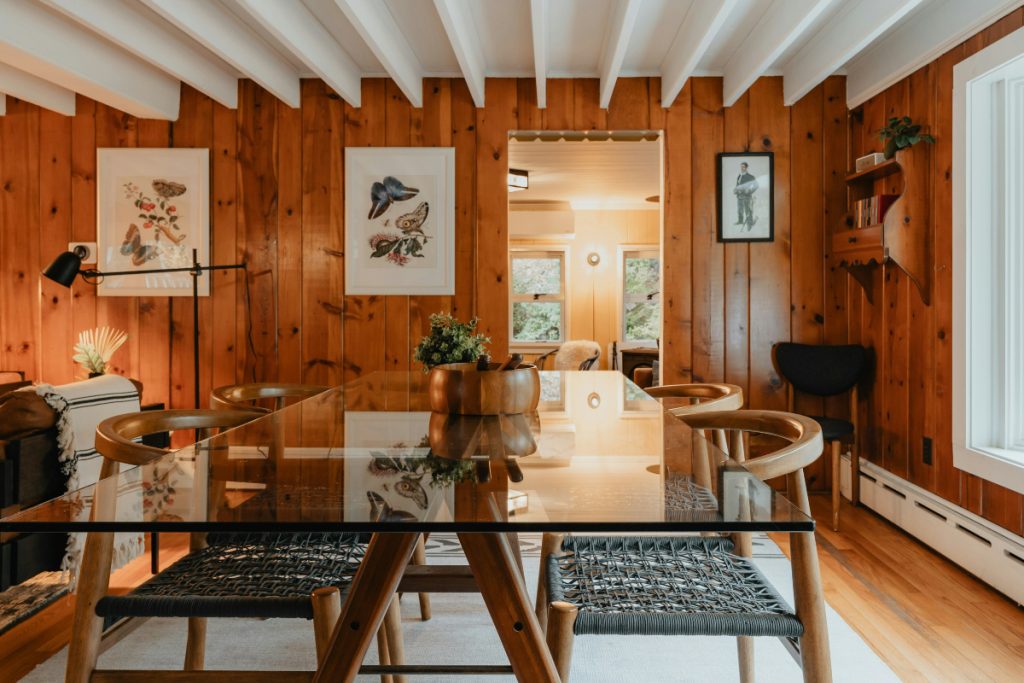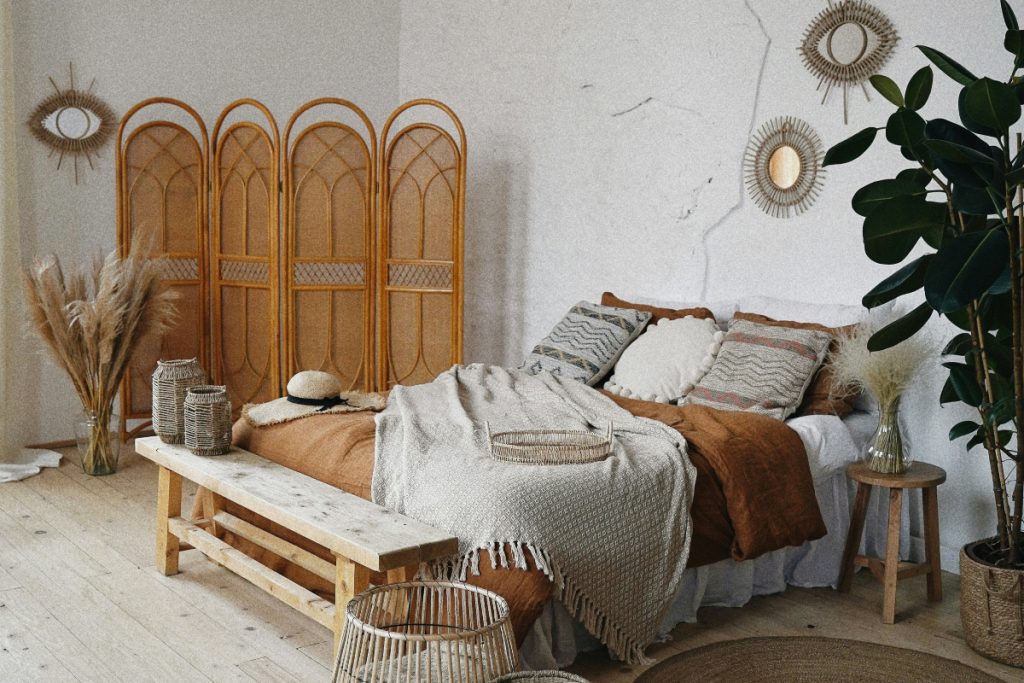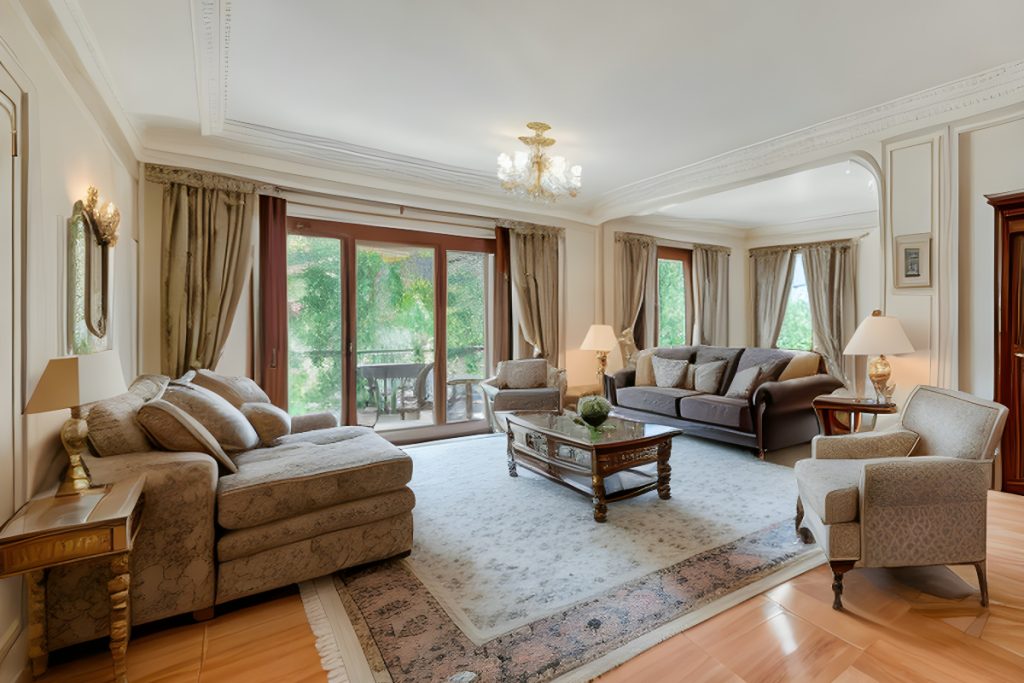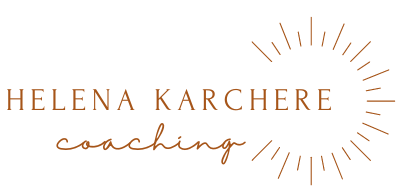Interior Design for your Enneagram Type
The Enneagram is an ancient understanding of personality types that helps people improve their relationship to self and others. Read on to learn how to design a space that helps you best express yourself and live your healthiest lifestyle…
Type One: The Moralist, The Reformer
The Personality: Ones are purposeful, with a high degree of self-control; their drive is to be good and to do right. Though they may be perceived by others as rigid perfectionists, for them the desire is to be true to their strong principles to help improve the world.
Their Space: The homes of Ones will tend to be organized, minimalist, and designed with an intentional aesthetic according to their priorities and values. For instance, if they are religious, they will want symbols in prominent display and a space set aside for spiritual practice. If organic produce is a strong value, they may install shelving and storage that displays their container garden and root vegetables, and artwork of local farms and produce.
Personal Growth: Ones will benefit from having their space reflect the mission that drives them, and practice self-compassion with less-than-perfect neatness. Their standards may be more strict than roommates or family members, so communicating clearly and with flexibility about both design and maintenance will be important.
Type Two: The Helper, The Pleaser
The Personality: Twos are drawn to caregiving, closeness, generosity, and being demonstrative. Their drive is to be loved. Though they may be perceived by others as self-sacrificing, their desire is to feel helpful.
Their Space: It’s safe to expect the home designed by a Two to be cozy, welcoming, and warm. Photos of friends and family featured all over. Seating will be ample and comfortable to allow for socializing and hosting. They will naturally want to share their gifts with loved ones–whether that be a piano positioned in the living room, a treatment room with a massage table, or a welcoming kitchen island featuring homemade treats.
Personal Growth: Twos may want to double-check that they have not acquiesced to other’s preferences in the home to please them, but feel resentful as they live in a space that doesn’t feel like theirs. Building in a special space (reading nook, bathtub time, garage workspace) that is just theirs is a good step towards good boundaries and self love.

Type Three: The Achiever, The Role Model
The Personality: Threes strive to be their best selves, build talents, and are often successful in the world. Their desire is to feel worthwhile and accepted. Though they may be perceived by others as “paragons,” they may have to intentionally rediscover what they truly want and feel.
Their Space: Awards and proud moments may be featured prominently, where they and visitors can appreciate their accomplishments. The home may be viewed as a functional space designed to best support the goals and development the Three is focused on. Or it may be seen as a part of that goal.
Personal Growth: Threes can fall into the trap of defining their self-worth as their level of success, instead of feeling worthy and “enough” internally. Choosing decor that reminds them of natural beauty and simplicity, and posting positive messages about being, not doing may help balance a drive to prove themselves.
Type Four: The Romantic, The Individualist
The Personality: Fours see themselves as different from others, often uniquely talented and creative. Their drive is to find themselves and express their individuality.
Their Space: Fours often lean into fantasy and use style to express their inner dreams and uniqueness. Rich fabrics, exotic scents, special lighting, music and beautiful objects abound. They may be quite particular about the atmosphere and dramatic effect of their space.
Personal Growth: Fours may be challenged with the more practical parts of life, if fantasy dominates. To combat procrastination, grandiosity or inadequacy consider incorporating helpful tools in your space that support healthy routines–whiteboard calendar, organized folder systems, lists.

Type Five: The Investigator, The Observer
The Personality: Fives want to understand how the world works; their drive is to be competent and masterful. They test assumptions, probe for new information, and contemplate deeply. They can struggle to take good care of themselves and maintain healthy relationships.
Their Space: Expect to see evidence of their studies and tools–in the form of full bookshelves, record collections, scientific instruments, inventions, etc. Fives will most likely need a space apart to retreat into and contemplate. This can look like a he/she shed in the backyard, or a certain time of day that they have their apartment bedroom to themselves.
Personal Growth: It is healthy for Fives to be grounded in their body, with their home reminding and empowering them to get regular exercise. Choosing colors and textures to engage with can help activate the senses, staying connected with the world.
Type Six: The Loyalist, The True Believer
The Personality: Sixes are loyal to systems, beliefs and people–but also are known for questioning the status quo. Their desire is to find support and security, and they can be challenged by self-doubt and anxious feelings.
Their Space: Sixes may prioritize an environment that is safe and consistent. This may look like home security measures, or having a pantry with plenty of supplies, an office space where bills, taxes, and legal documents are readily available and organized.
Personality Growth: Anxiety is common for Sixes, so it will be important to design a space that is truly supportive and not anxiety-provoking. What those things are will vary, so self-knowledge is key here.

Type Seven: The Enthusiast, The Generalist
The Personality: Sevens bring excitement and optimism, pursuing their desire to be fulfilled and happy. They can pick up many interests and skills, but their pursuit of new experiences can leave them feeling unsatisfied and frustrated.
Their Space: Likely filled with various souvenirs from travel, tools for many hobbies, and is ever- changing. It’s important to them to have interesting, fun, positive influences in their decor.
Personal Growth: Sevens must be cautious of the “grass is always greener” mentality. This may have them moving frequently, adding more and more decor to the point of overwhelm. It will be helpful to Sevens to create spaces that encourage a quiet mind, such as a meditation room or living space that is less cluttered than they may naturally be drawn to.
Type Eight: The Leader, The Challenger
The Personality: Eights thrive on taking on challenges and challenging others to grow to build a better world. Their desire is to lead their own path in life, and they can be perceived as intimidating and competitive.
Their Space: Their home is likely very important to them–providing a protected and private space to recharge. Furniture, appliances, decor may be big and top of the line to give with their “go big” mentality.
Personal Growth: Eights tend to get their way, and not realize how they have led without consulting those around them. It will be helpful to stop and question whether the design of the home has been negotiated and is serving all. Also, given that they pursue intensity, creating peaceful and calm spaces is essential to balance.
Type Nine: The Peacemaker, The Healer
The Personality: Nines seek peace–both external and internal–for themselves and others. They desire to maintain inner stability, and can be seen as a chameleon who fears separateness and independence.
Their Space: Nines are said to have characteristics of all other types, so their space may reflect their desire to connect with and be at peace with many styles. Their home may be designed as an escape, a sanctuary.
Personal Growth: Nines may go along with others to be accommodating, being unaware of and not advocating for their needs and preferences in their space. They will do well to design a lifestyle and space that helps them more fully “show up” instead of “checking out.” This may involve exercise equipment within view, self help books on the nightstand and invigorating quotes on the wall.
Further learning: There are nine main Enneagram types, with nuances including subtypes, wings, and levels of health. Read “The Wisdom of the Enneagram” by Riso and Hudson to learn your type and practices for healing and integration.
I was named an expert in an ApartmentGuide article. Check out the featured article: Which Design Style You Should Try, Based on Your Enneagram
Sign up for Helena's Blog
Welcome!
I am a coach, facilitator and program director in Denver, Colorado. I bring a high-performance mindset from 18 years leading in global corporations, startups, non-profits and Higher Ed. I’ve also honed skills in emotional intelligence and practical spirituality through training with ICF, Shadow Work®, Insights Discovery and motherhood. If you’re ready to do powerful inner work, and also get tangible results in your external environment, please follow my blog and reach out to talk about coaching!
Recent Comments
- HelenaAnn on The Four Quarter Model
- Mariette Strub on The Four Quarter Model
- Brianna on Tales of a Working Parent in 2020: The 3 Spheres of Attention
- Ruth Buckingham on Driving in Emotional Weather
- Ruth on Keep Your Labels To Yourself, Thanks








